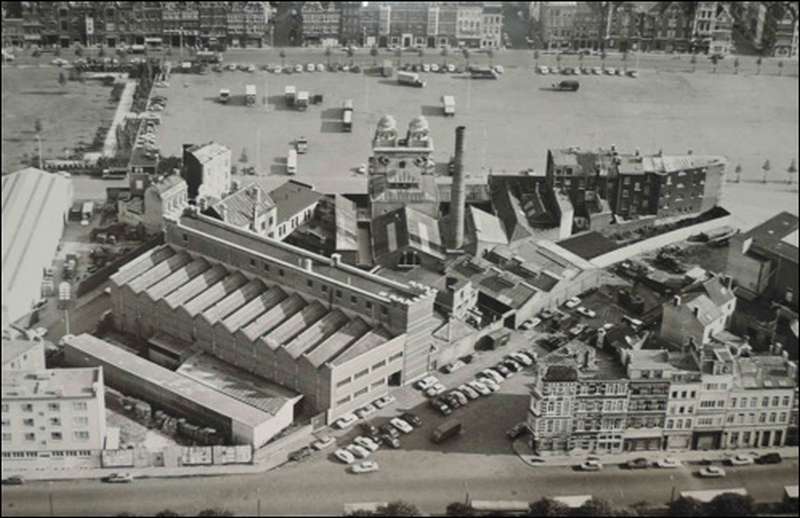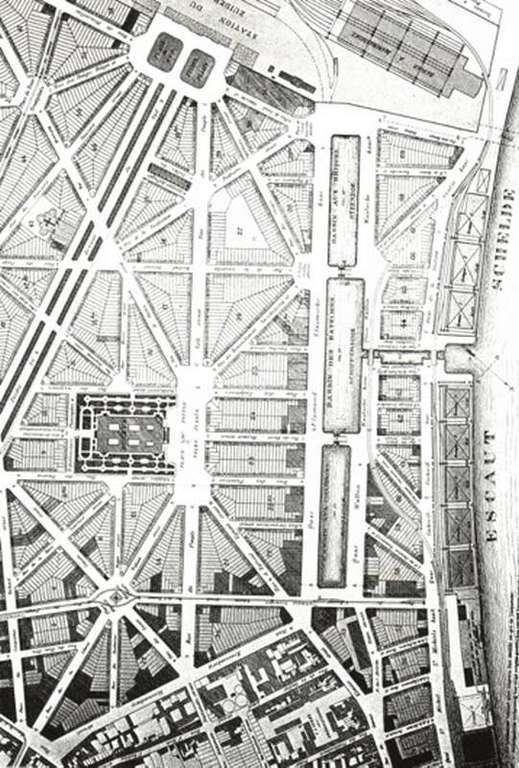In the 19th century, the Antwerp population grew at an immense rate. However, the ‘Spanish walls’, with its citadel and 600 metre firing range, made city growth near impossible. Early 1864, it was decided to terminate the firing range and to sell the South Castle, with the obligation to allocate a portion of the terrain to port facilities. In the soon-to-be ‘South’ neighbourhood three new docks for inland waterway vessels were created, parallel to the river Scheldt and accessible through a perpendicular lock. As such, a maritime quarter originated between the river and the docks, with mixed construction for habitation and port related, commercial and industrial activities.
Zuiderpershuis was one of the earliest realisations on these terrains. It was strategically constructed next to the first dock (from which it could pump the necessary water) and the railways (a by-pass from the railway would mean a significant reduction in coal transport).
The design of the impressive façade of the accumulator towers is attributed to architect Ernest Dieltiens and expresses not only the power of the hydraulic station but also the ambition of a port of global renown in full expansion.


